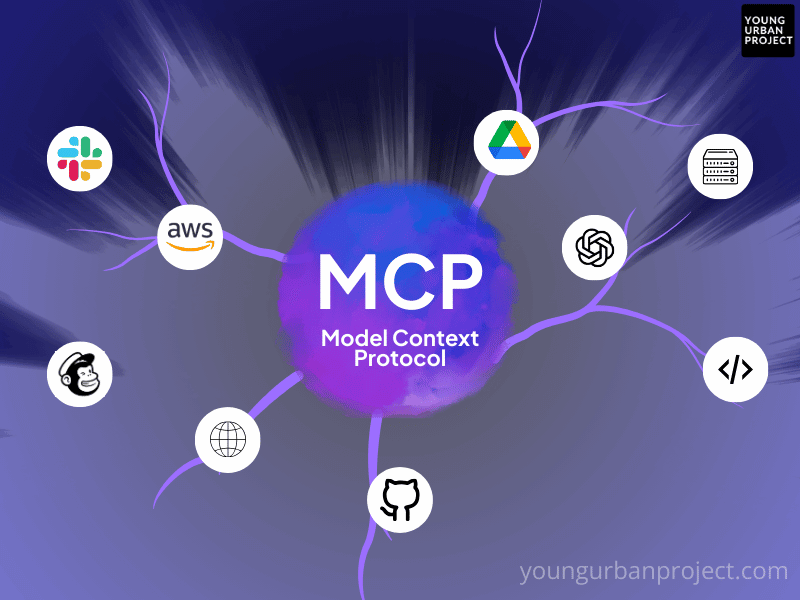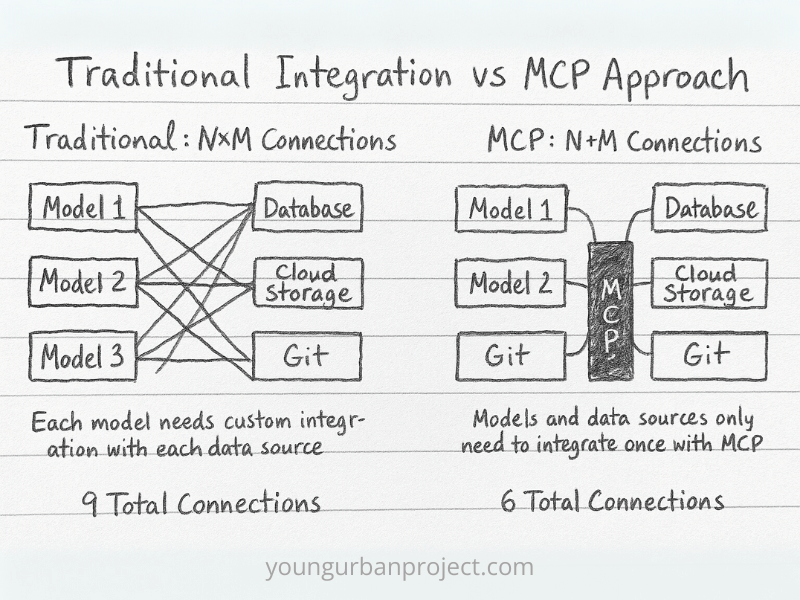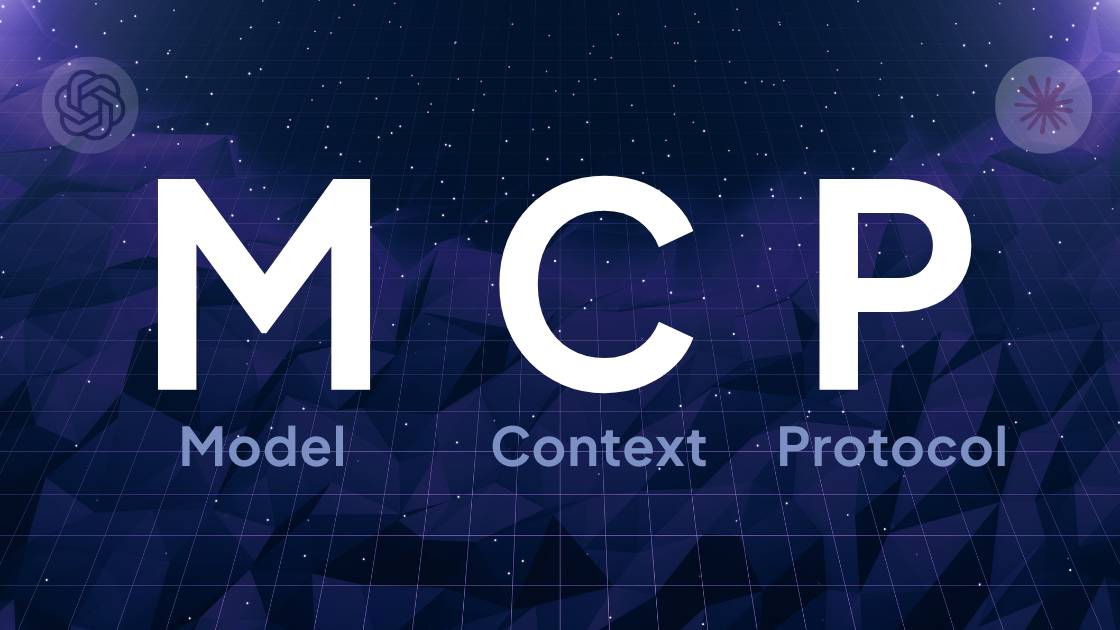AI is getting smarter by the day – but let’s be honest, even the most advanced AI sometimes feels… disconnected.
Table of Contents
Imagine asking your AI assistant to draft an email referencing last week’s meeting notes and attaching the latest report. Sounds simple, right? But most AI tools would stare blankly (if they had eyes), waiting for you to manually feed them those details.
This is a core limitation of large language models (LLMs). They’re brilliant at generating human-like responses, but when it comes to accessing real-time context – your files, tools, or live data – they hit a wall.
So, how do we fix this?
Enter the question everyone’s asking: What is MCP in AI?
Let’s break it down.
What is MCP in AI?
The Model Context Protocol (MCP) is an open standard that allows AI models—like assistants, agents, or apps—to seamlessly connect with external tools, data sources, and services.
Think of MCP as a universal adapter. Instead of building custom, fragile integrations every time you want your AI to “talk” to your calendar, CRM, or file storage, MCP provides a standardized language for these connections.
Originally introduced by Anthropic, MCP is now being adopted by major players like OpenAI, Google DeepMind, and platforms like Replit, Block (Square), and Sourcegraph. It’s quickly becoming the backbone for context-aware, action-oriented AI systems.
Why Was MCP Created?
Before MCP, integrating AI models with external systems was messy:
- Every AI agent needed custom code to connect to each data source.
- Scaling across tools became a nightmare—what’s known as the N x M problem (where N = number of models, M = number of tools).
- Security, privacy, and consistency were often afterthoughts.
MCP solves this by acting as a universal protocol, much like USB standardized hardware connections or HTTP did for the web.

Now, AI models can dynamically access the right context—whether that’s fetching documents, querying a database, or triggering an API—without reinventing the wheel every time.
How Does MCP Work? (Without the Jargon)
At its core, MCP uses a Host – Client – Server architecture:
1. Host
Think of this as the control tower. The Host manages AI agents (Clients), enforces security, permissions, and ensures everything runs smoothly.
2. Client
This is your AI assistant or agent. It connects to external services via MCP, requesting data or triggering actions.
3. Server
These are your toolboxes—data sources, APIs, file systems. Once an MCP Server is set up, any MCP-compatible AI agent can interact with it.
A Simple Example:
You ask your AI assistant to “Schedule a meeting with John next week.”
- The Client (AI assistant) sends a request.
- The MCP Server fetches your calendar data.
- The AI finds free slots and books the meeting.
- The Host ensures security, checks permissions, and logs the action.
No custom integration. No hacks. Just seamless interaction.
The Power of MCP: Solving Real AI Challenges
🚀 1. Dynamic Context Access
MCP gives AI real-time access to files, databases, APIs, and tools—making AI genuinely useful beyond just chatting.
🤝 2. Standardization & Collaboration
With over 1,000 open-source connectors already available, teams can plug AI agents into existing ecosystems effortlessly. Companies like Block, Apollo, and Zed are already leveraging this.
🔒 3. Security & Privacy First
MCP is designed with strict boundaries:
- Clients can’t “snoop” on each other.
- Hosts manage consent, encryption, and compliance (think GDPR, HIPAA).
- Servers expose only what’s allowed, when it’s allowed.
♻️ 4. Scalability
Forget building one-off integrations. MCP’s N + M approach means you integrate each model and each tool once—saving time, money, and headaches.
Also Read: What is Multi-Modal AI?
Understanding MCP “Primitives”: The Building Blocks
MCP Servers expose three key “primitives” that AI agents can use:
| Primitive | Controlled By | Description | Example |
|---|---|---|---|
| Prompts | User | Pre-defined instructions or templates | Slash commands, menus |
| Resources | Application | Contextual data fetched by the client | Files, Git logs |
| Tools | AI Model | Functions the AI can execute | API calls, file edits |
These primitives allow AI systems to act, not just respond.
Also Read: What are the main goals of Generative AI
Real-World Use Cases of MCP
📅 1. AI Assistant Managing Calendars
An AI agent connects via MCP to your calendar server, fetches availability, and schedules meetings—autonomously and securely.
🏥 2. Healthcare AI with Privacy Controls
A medical AI accesses patient records through an MCP server:
- Ensures consent and compliance.
- Fetches data securely.
- Drafts consultation summaries or schedules follow-ups.
💼 3. Business Automation
AI agents update CRMs, manage cloud storage, or trigger workflows—all through standardized MCP connections.
MCP vs Traditional AI Integrations

| Feature | Traditional Integration | MCP Approach |
|---|---|---|
| Integration Method | Custom, per tool | Standardized protocol |
| Scalability | Complex (N x M connections) | Simple (N + M) |
| Security & Compliance | Varies, often inconsistent | Built-in, enforced |
| Flexibility | Rigid | Highly modular |
| Developer Effort | High | Low |
Why MCP is the Future of AI
If TCP/IP connected computers to form the internet, MCP is connecting AI to the real world.
As AI evolves from static chatbots to dynamic agents capable of taking actions, protocols like MCP will define how smoothly and safely this transition happens.
With backing from major AI labs, open-source communities, and enterprise adopters, MCP is set to become the standard for building responsive, intelligent applications – across industries.
Conclusion: Embrace Context-Aware AI
So, next time someone asks, “What is MCP in AI?”, you can tell them:
It’s the protocol that lets AI stop pretending to be smart – and actually get things done.
By bridging AI models with real-time tools, data, and services, MCP transforms isolated intelligence into powerful, context-aware agents ready for real-world impact.
The future isn’t just AI. It’s AI that understands your world – thanks to MCP.

